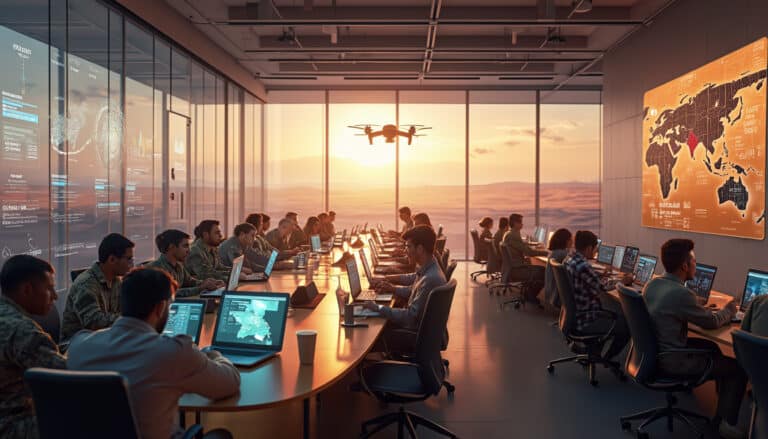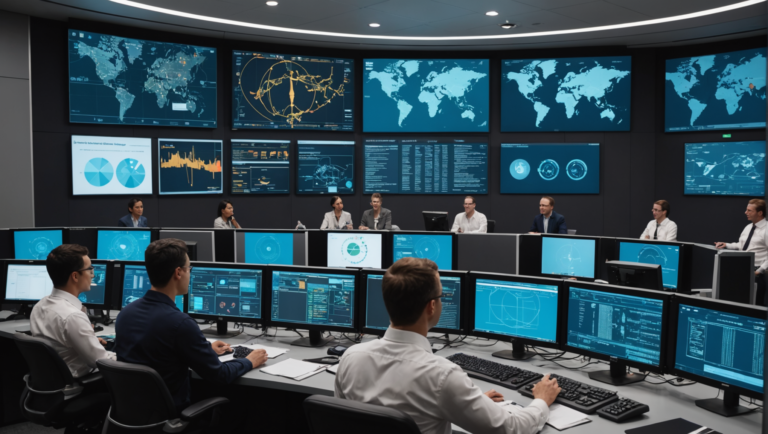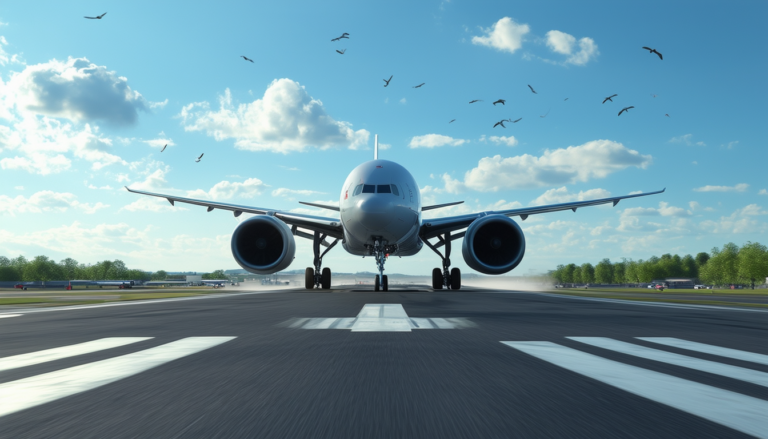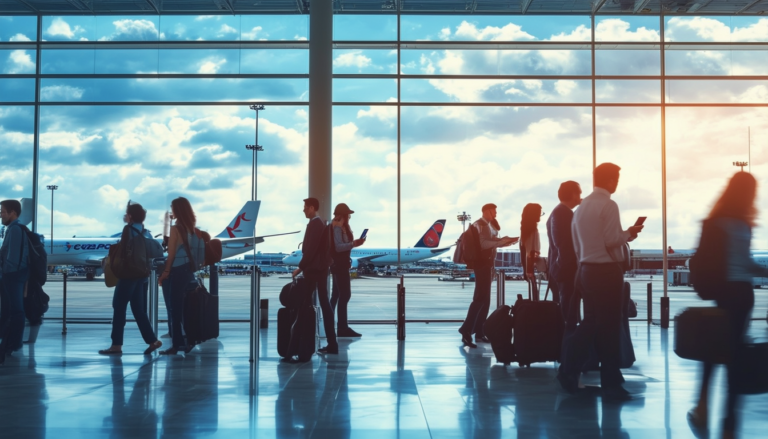Flight safety is an essential priority in aviation, and it is largely based on optimal aircraft maintenance. A rigorous approach to maintenance not only prevents incidents and accidents, but also guarantees the reliability of flight operations. By integrating preventive, corrective and predictive maintenance practices, industry professionals can ensure that each element of the device is operating in optimal conditions. This requires a thorough understanding of aviation systems, strict adherence to regulations and ongoing training for maintenance technicians. Thus, a commitment to systematic and well-planned maintenance is essential to maintaining the highest standards of safety in the sky.
Table des matières
ToggleThe importance of preventive maintenance
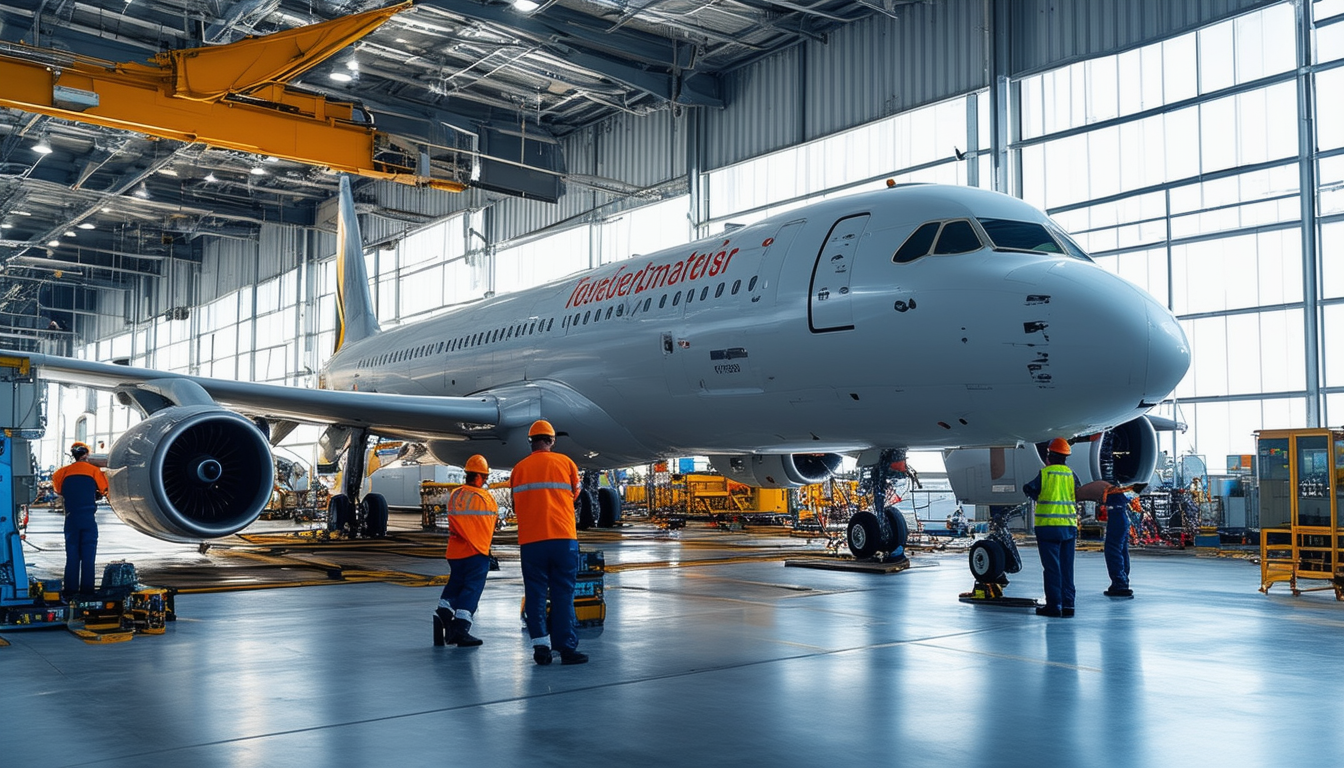
There preventive maintenance plays a crucial role in the safety aeronautics. It helps identify and correct potential problems before they affect flight operations. By implementing a rigorous maintenance program, operators can significantly reduce the risk of incidents and accidents.
An effective preventive maintenance program includes several key elements:
- Regular inspections : Carry out systematic checks at defined intervals to detect signs of wear or failure.
- Flight hour tracking : Accurately record flight hours and duty cycles to plan necessary interventions.
- Data analysis : Use management systems to analyze aircraft performance and detect anomalies.
- Technician training : Ensure that maintenance personnel are trained and informed of the latest techniques and technologies in aeronautical maintenance.
Implementing preventive maintenance also requires a culture of safety within the organization. All team members must be made aware of the importance of rigorous maintenance and its impact on flight safety. A well-integrated maintenance department, where communication and initiative are encouraged, is essential to ensure that procedures are followed and all aspects of safety are considered.
By using modern technologies, such as the Internet of Things (IoT) and predictive analytics, it is possible to move from a reactive to a proactive approach to maintenance. This helps anticipate maintenance needs and reduce downtime, while ensuring that each aircraft remains compliant with safety standards the highest.
Finally, it is essential to comply with aeronautical maintenance regulations. Regulatory bodies set strict standards that all organizations must follow to ensure optimal security. Failure to comply with these requirements can have serious consequences, both in terms of safety and the reputation of the operator.
Regular inspections and audits
There flight safety is closely linked to the quality of aeronautical maintenance. A proactive approach, based on preventive maintenance, plays an essential role in reducing risks and optimizing aircraft performance. This approach aims to identify and correct potential problems before they affect the safety of operations.
THE regular inspections and the audits are key elements of this strategy. By implementing a framework of systematic assessments, airlines and operators can ensure that every aspect of the aircraft is checked comprehensively.
Regular inspections should include the following:
- Checking navigation systems and communication to guarantee optimal use of equipment.
- Motor control and energy performance to prevent critical outages.
- Cell Inspection and bearing surfaces in order to detect signs of fatigue or corrosion.
- Security system testing, such as emergency equipment, to ensure their functionality.
Audits, on the other hand, must be carried out by independent and qualified teams. They evaluate the conformity of the procedures of maintenance with regulatory standards and industry best practices. These audits make it possible to:
- Identify gaps in maintenance processes.
- Propose recommendations to improve efficiency and safety.
- Check adherence to continuing training by technical teams.
A systematic and rigorous approach to regular inspections and audits constitutes a central pillar to ensure optimal flight safety. By investing in a preventive maintenance, aircraft operators can not only extend the life of aircraft, but also increase the confidence of passengers and authorities regarding aviation safety.
Training of maintenance personnel
There preventive maintenance plays a crucial role in flight safety. By making it possible to identify and resolve problems before they become critical, it helps ensure aircraft reliability. Regular inspections, combined with good maintenance planning, reduce the risk of incidents linked to the failure of a flight principle.
Technicians must be continuously trained to stay up to date on best practices and new technologies. The implementation of a program of training of maintenance personnel is essential to improve the competence and responsiveness of staff. This includes updating knowledge of avionics systems, engines and control systems. Hands-on training sessions should be included to simulate emergency situations and critical repairs.
Training areas may include:
- Standards and regulations of aviation.
- Emerging technologies in aeronautics.
- Safety procedures and emergency protocols.
- Preventive maintenance and corrective action of aircraft.
- Use of specialized software for maintenance management.
Well-trained personnel are crucial to identifying anomalies and acting appropriately. Continuing training allows technicians to adapt to innovations and use new tools and equipment effectively. By investing in training, companies can not only improve the safety of flight operations, but also increase employee satisfaction and morale.
Collaboration with accredited training organizations, as well as participation in conferences and seminars, naturally enriches staff skills and reinforces commitment to a safety culture.
Modern technologies for security
There flight safety is inseparable from a optimal maintenance aircraft. Recent technological advances offer innovative solutions to guarantee a high level of security. Integrating these new technologies into maintenance processes can radically transform the way aircraft are maintained.
The systems of advanced diagnosis play a crucial role in early identification of potential problems. These tools help analyze the performance of engines, hydraulic systems and other critical components, reducing the risk of in-flight failure. Diagnostic results can be integrated into maintenance management software that facilitates intervention planning.
The tools of real-time monitoring are also essential. Thanks to integrated sensors, it is possible to monitor the state of the aircraft during its flight. This data, when analyzed, helps detect anomalies or unusual behavior, ensuring that issues are addressed quickly and efficiently.
THE predictive maintenance systems constitute a significant step forward. By analyzing historical and current data, these systems predict outages before they occur. This type of approach not only avoids unforeseen costs, but also optimizes the availability of aircraft for missions.
Finally, continuing staff training is a key element to ensure quality maintenance. Adopting new technologies requires technicians to be properly trained in their use. Regular training sessions and update programs on aeronautical innovations thus strengthen the team’s skills and contribute to better safety.
To ensure flight safety, it is essential to explore and integrate these modern technologies in the field of aviation maintenance. A constant commitment to innovation and improvement in operational practices helps maintain high safety standards, making flight operations safer for everyone.
Monitoring and diagnostic systems
There flight safety relies largely on the effectiveness of the aeronautical maintenance. The adoption of modern technologies allows maintenance processes to be optimized, thus guaranteeing a high level of safety. The integration of advanced monitoring and diagnostic systems plays a key role in this approach.
THE monitoring and diagnostic systems are essential tools for proactive aircraft maintenance. Through real-time data collection, these systems can quickly identify anomalies and assess the condition of critical components. Among the technologies used, we distinguish:
- Smart sensors : They continuously monitor system performance, providing visibility into the status of the aircraft.
- Predictive analytics : Advanced algorithms predict potential failures, allowing intervention before a problem affects the safety of operations.
- Online tracking : Digital management tools facilitate the monitoring of maintenance interventions carried out on aircraft.
By combining these technologies, it is possible to establish maintenance protocols adapted to the specific needs of each aircraft. This is part of a continuous improvement process, aimed at strengthening the security while optimizing operating costs.
To maximize the effectiveness of the maintenance, teams must also ensure that all staff involved are trained in the use of these tools. Continuing training ensures that technicians are up to date with the latest innovations and best maintenance practices.
Finally, collaboration between the different players in the sector, including aircraft manufacturers, THE operators and the regulatory bodies, is crucial for the implementation of high security standards. The exchange of expertise and feedback makes it possible to improve maintenance processes and ensure the safety of flight operations.
Artificial intelligence and predictive maintenance
Flight safety is largely based on optimal maintenance aircraft. Technological advances, and more particularly the use ofartificial intelligence, are revolutionizing the way we approach maintenance. This development makes it possible to predict and anticipate potential failures, thus ensuring better safety in the sky.
The integration of modern technologies within maintenance processes leads not only to a reduction in costs, but also to an increase in aircraft availability. In particular, two key areas emerge:
- Predictive maintenance : thanks to the analysis of massive data, it is now possible to anticipate breakdowns before they occur.
- Real-time monitoring : Onboard sensors provide continuous data on the status of the aircraft, facilitating rapid response when needed.
There predictive maintenance is one of the most promising areas, allowing maintenance teams to intervene before a problem occurs. This relies on machine learning algorithms that analyze historical and real-time data. These systems can identify trends and provide recommendations for maintenance, reducing downtime.
Furthermore, the capabilities of real-time monitoring provide unparalleled visibility into the health of aircraft during operation. The data collected can be monitored on interactive dashboards, immediately alerting teams to any anomalies detected. This ensures increased responsiveness and helps preserve the flight safety.
For professionals in the sector, it is essential to integrate these technologies into their daily lives in order to stay at the forefront of best practices. aeronautical maintenance. The future of aviation safety will depend heavily on the adoption and continued improvement of these modern tools.



















